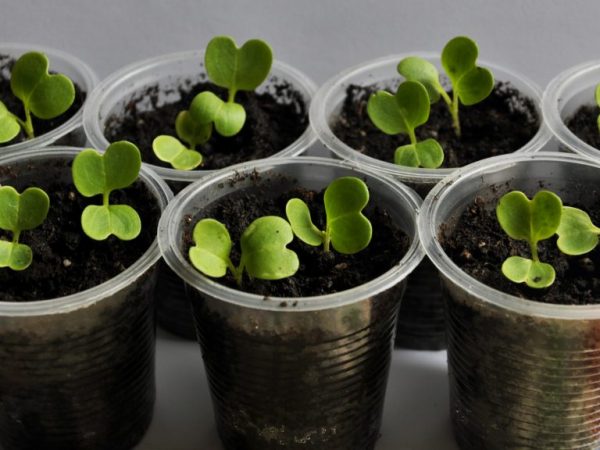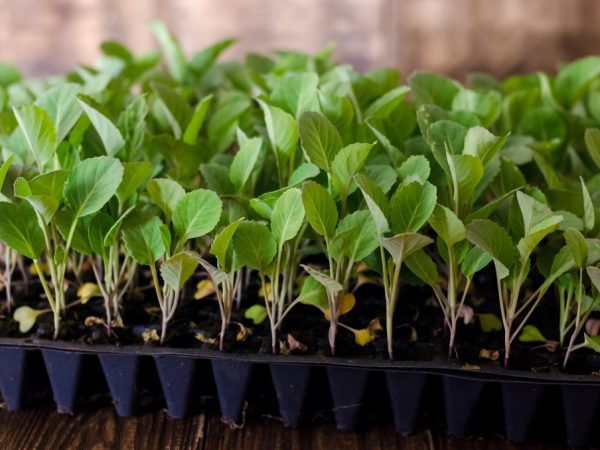The principle of growing cabbage seedlings
Growing cabbage seedlings is one of the fundamental factors in obtaining a good harvest. It is rarely possible to grow good cabbage in a seedless way, so almost no one uses it. Consider the secrets of this cultivation.

The principle of growing cabbage seedlings
Classification
The rules for growing cabbage differ depending on the variety. The timing of sowing seeds will also depend on the variety. The first heads of cabbage, which are used for light salads, are completely unsuitable for long-term storage.
Based on the timing of ripening, the culture is divided into 3 types.
- Early. The first heads of cabbage appear in June, but the crop is notable for its low yields. Heads of cabbage are small, not suitable for long-term storage. They are eaten fresh, sometimes they are used to prepare some dishes.
- Medium ripening. Can be used fresh or for pickling. The storage periods are not very long. Heads of cabbage will remain in their normal form until about mid-January, or even less, depending on conditions.
- Late. It is rarely used for fresh consumption, except for food for a snail, rabbits living at home. It is perfectly stored for six months, or even more. With good care, the weight of one head of cabbage can be up to 7 kg.
The choice of species depends on the area of the planting, but it is advisable to grow all 3 varieties at once, or at least early and late maturing. Arriving at the store, it is important to carefully read what area the seeds are intended for. Having decided what kind of crop you want to grow, buy 2-3 packs. Having cut the harvest in the fall, it will be easier to make a choice for the next year.
Seed preparation
Before growing cabbage seedlings at home, you need to carefully examine the bag, study all the manufacturer's information. If the seeds are covered with glaze during packing, as will be indicated, they do not need to be additionally prepared for sowing. All types of cabbage crops should be grown in seedlings, otherwise you may be left without a good harvest.
In other cases, they are engaged in the preparation of seeds for sowing. Water with a temperature of about 40-50 ℃ is taken into the container and the seeds are immersed in it for 20 minutes. After 5 minutes, they are kept in clean water or potassium permanganate solution.
Pre-treatment is necessary to identify empty seeds (they will float at the very beginning of soaking). So you wake up the seed and the growth processes will begin in it. Another important step in seed treatment is the prevention of fungal diseases in the early stages of growth.
Landing dates
The stage of growing cabbage seedlings at home has a clearly defined time frame. Failure to comply with them is fraught with loss of harvest. Both early and late sowing will have an equally bad effect on the state of crops.
- an early cabbage crop is planted in March, after the 8th;
- the average ripeness of the variety is sown in the period from 20.03 to 20.04;
- late-ripening culture is planted in April, sowing is completed by the 25th.
If you want to get it right, calculate the exact planting date yourself. After pre-treatment of the seed, it will take almost 2 weeks until the time of hatching, on average - 10-12 days. It will take 2 months before picking seedlings into open ground. Seeds should be started to sow 70 days before the expected dive into an open area.
Regardless of the variety, the cabbage crop should not be transplanted into the soil until the onset of stable heat. The timing of planting does not matter, only if you are going to dive seedlings into greenhouses.
Preparing the soil

Good seedling in prepared soil
To grow healthy cabbage seedlings at home, prepare the ground. It is recommended to start preparation even in the autumn period, before the onset of cold. The earth is mixed and sent to storage in the cellar or on the balcony. If you do not have time to complete all the manipulations in the fall, you will have to deal with mixing the earth right before planting the seed.
This will require a substrate with a neutral acid reaction. Usually peat is mixed with humus in a 1: 1 ratio. For 1 kg of soil, you need to put 1 tbsp. l. ash. Wood ash is a good antiseptic agent, and also enriches the soil with nitrogen, which is necessary for plants in the initial stages of growth to maintain normal life and form immunity.
Planting seed
When growing cabbage seedlings, do not forget that a pick will be required for its full development. At the initial stage, they take a common container with a shallow depth. Drainage holes are made in the bottom of the container for landing. Cabbage is a moisture-loving plant, so you will have to water it often. This increases the risk of black leg infection. To avoid this, drainage is placed on the bottom of the pots during planting and during the subsequent picking in separate containers.
Before planting, the soil is moistened. After that, it is impossible to water the soil until the first shoots. Seeds should be sown in rows. After sowing, the pots are covered with polyethylene to create a greenhouse effect and set aside in a warm place. Polyethylene is periodically opened to avoid mold growth of the earthen coma and the spread of fungal diseases.
Seedling care
When the sprouts hatch, they are thinned out to a distance of 2 square meters. cm and set the pots on a well-lit windowsill. It is such an area that each sprout needs to obtain nutrients from the earth.
After 21 days, the seedlings are planted in separate pots. The ideal option is peat pots, then when planting in open ground you will not have to remove the plant once again. The container should be 6-8 cm in diameter. This will be enough.
Seedling care
The technology for growing cabbage seedlings is not particularly difficult, but you need to properly organize the care of the sprouts. To grow beautiful juicy heads of cabbage, you should organize additional lighting of seedlings in the early stages of growth. It is better to equip the place for seedlings in advance with fluorescent lamps. Immediately after germination, daylight hours are increased to 14 hours.
Cabbage sprouts respond well to abundant watering. After each moistening, the soil is thoroughly loosened. Do not forget about observing the temperature regime:
- before sprouting - 21 ° С;
- after pecking - 15-18 ° С;
- in the period before planting in open ground, the night temperature is 8-10 ° C.
In the process of growing, the seedlings are regularly fed. The first time fertilizers are applied after sprouting after sprouting after 14 days. At this stage, it is better to use preparations containing potassium compounds.
Fertilizers are applied for the second time after another 14 days. For the last time, top dressing is applied a couple of weeks before planting in the ground, before hardening. The hardening procedure is an important measure that allows the plant to painlessly transfer the pick to an open area.To begin with, they simply open the window window, gradually reduce the air temperature in the room, then they begin to put seedlings on a closed loggia at night.
Cabbage sprouts fully prepared for diving into open ground should have 4-5 fully formed, strengthened leaves. The transplant is carried out by the transfer method. The wells are preliminarily fertilized with organic matter. The humus should not be fresh, or there is a risk of burning the root system. Better to use diluted mullein or bird droppings.
Summarizing
Growing seedlings at home begins in March-April, depending on the variety chosen. Under optimal growing conditions, it will be possible to get sprouts prepared for picking into open ground in 2 months.


